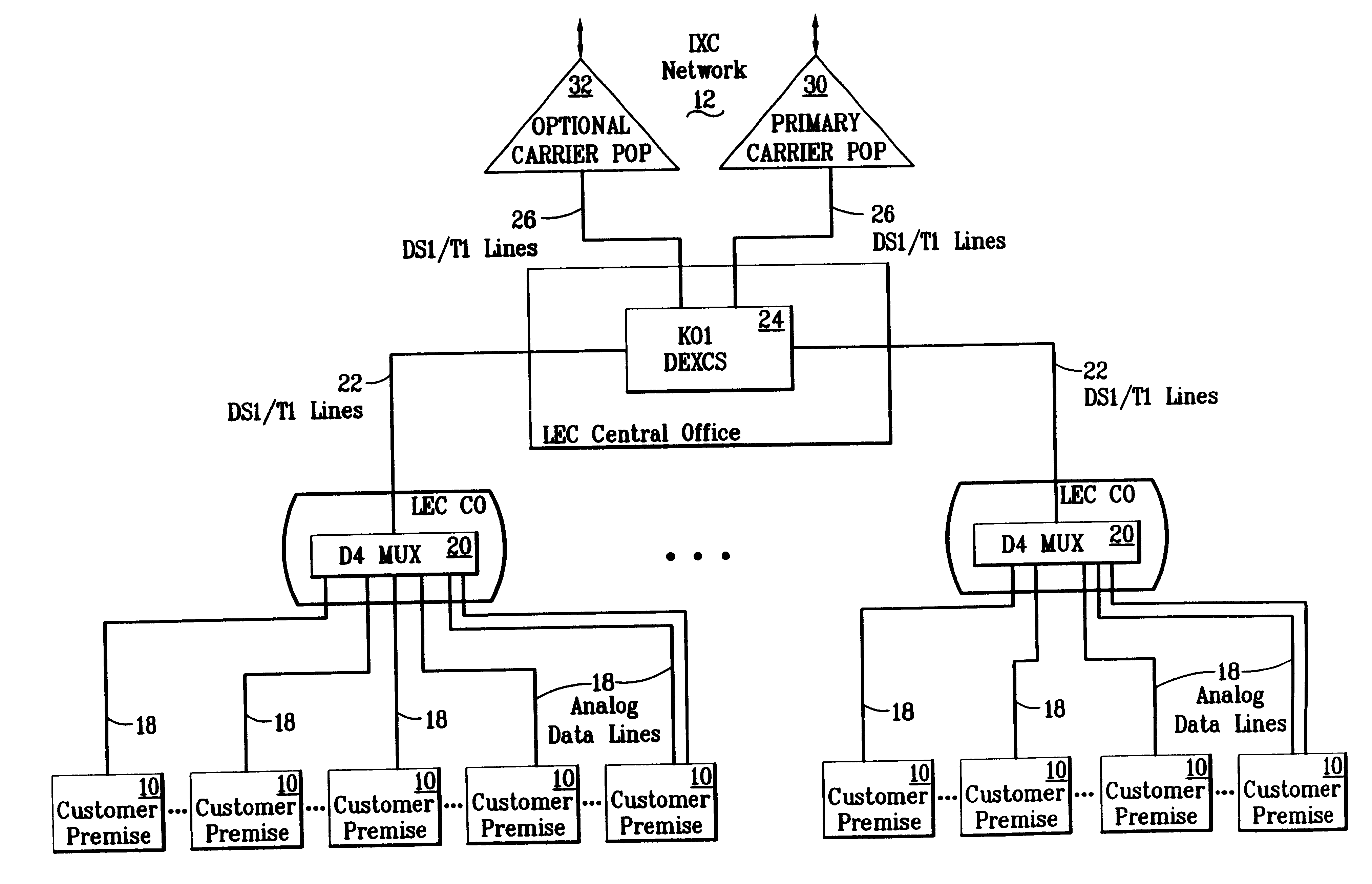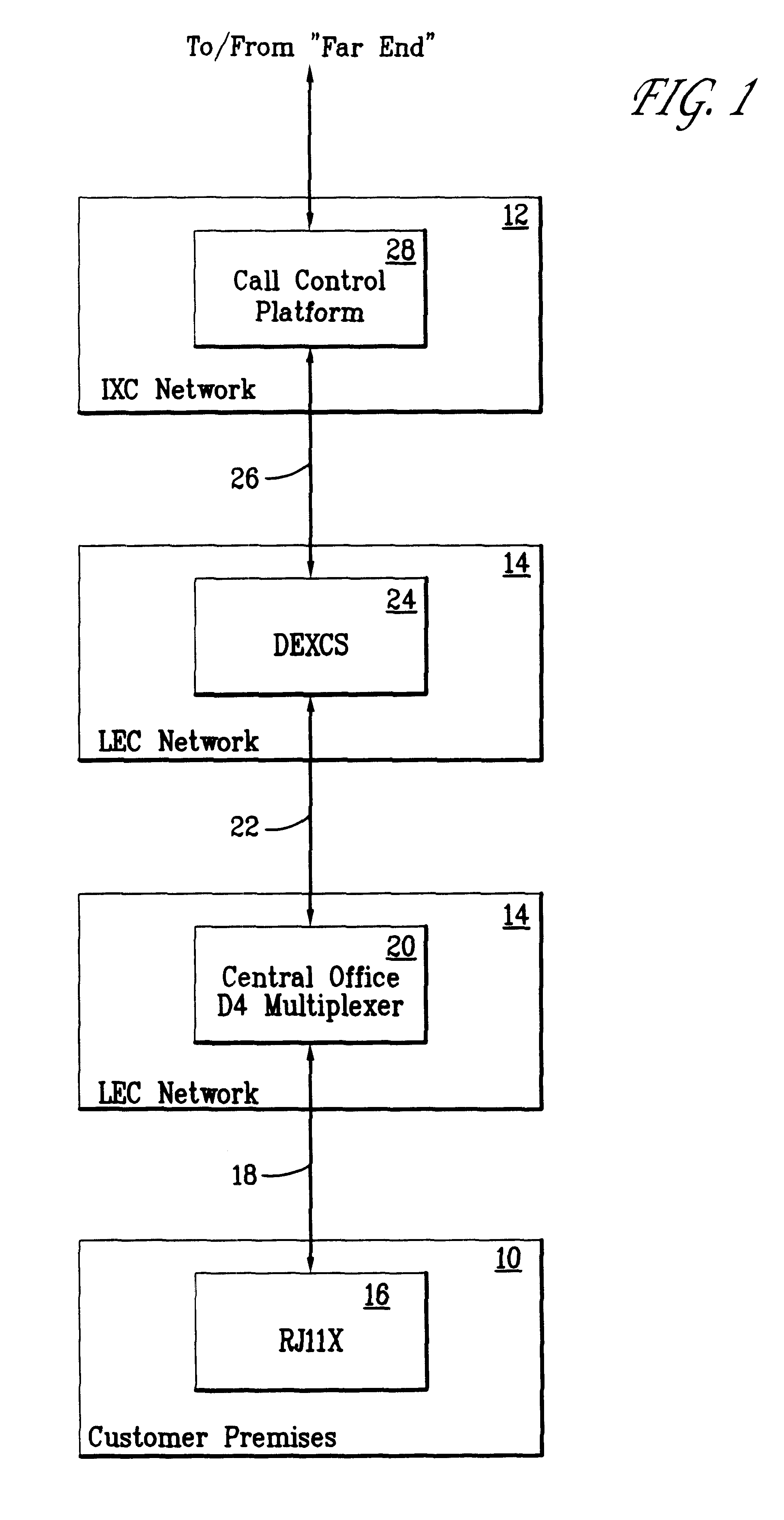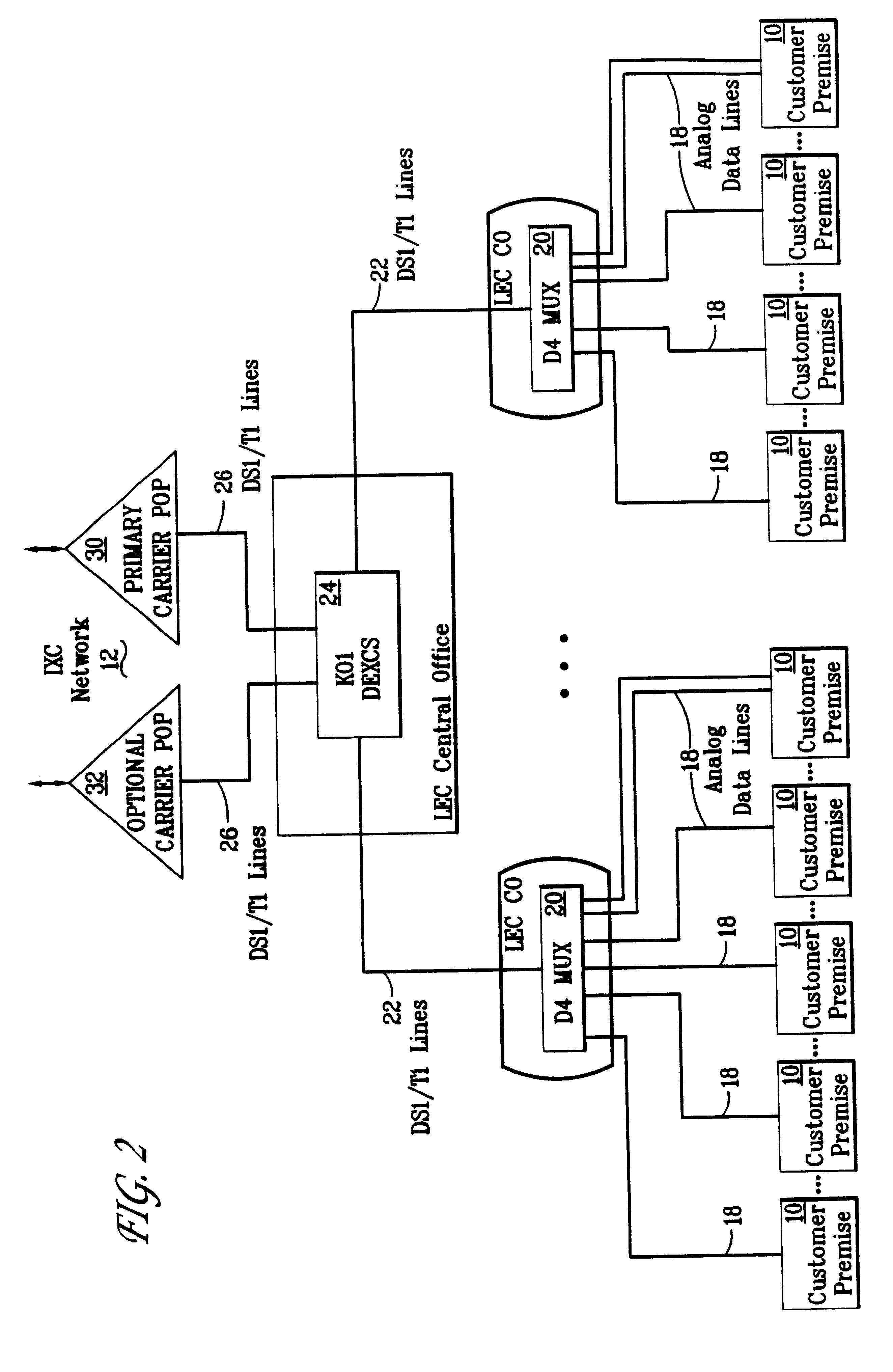Method and apparatus for bypassing a local exchange carrier using analog in-band signaling
a local exchange carrier and analog in-band technology, applied in the field of telecommunications systems, can solve the problems of increasing the cost of subscriber service, increasing the cost of service, and encumbering the subscriber and long distance carrier with many of the same problems
- Summary
- Abstract
- Description
- Claims
- Application Information
AI Technical Summary
Problems solved by technology
Method used
Image
Examples
Embodiment Construction
A method and apparatus for bypassing a local exchange carrier (LEC) in accordance with the presently preferred exemplary embodiments of the invention will be described below with reference to FIGS. 1-4. It will be appreciated by those of ordinary skill in the art that the description given herein with respect to those figures is for exemplary purposes only and is not intended in any way to limit the scope of the invention. All questions regarding the scope of the invention may be resolved by referring to the appended claims.
The present invention relates to a method and apparatus for bypassing LEC equipment tariffed for voice services to provide a customer with direct access, without access charges, to a long distance inter-exchange carrier (IXC). As shown in FIG. 1, such bypass is accomplished in accordance with a preferred embodiment of the invention by creating a hardwire connection between the customer premises 10 and the IXC network 12 via the LEC network 14 using only LEC equip...
PUM
 Login to View More
Login to View More Abstract
Description
Claims
Application Information
 Login to View More
Login to View More - R&D
- Intellectual Property
- Life Sciences
- Materials
- Tech Scout
- Unparalleled Data Quality
- Higher Quality Content
- 60% Fewer Hallucinations
Browse by: Latest US Patents, China's latest patents, Technical Efficacy Thesaurus, Application Domain, Technology Topic, Popular Technical Reports.
© 2025 PatSnap. All rights reserved.Legal|Privacy policy|Modern Slavery Act Transparency Statement|Sitemap|About US| Contact US: help@patsnap.com



